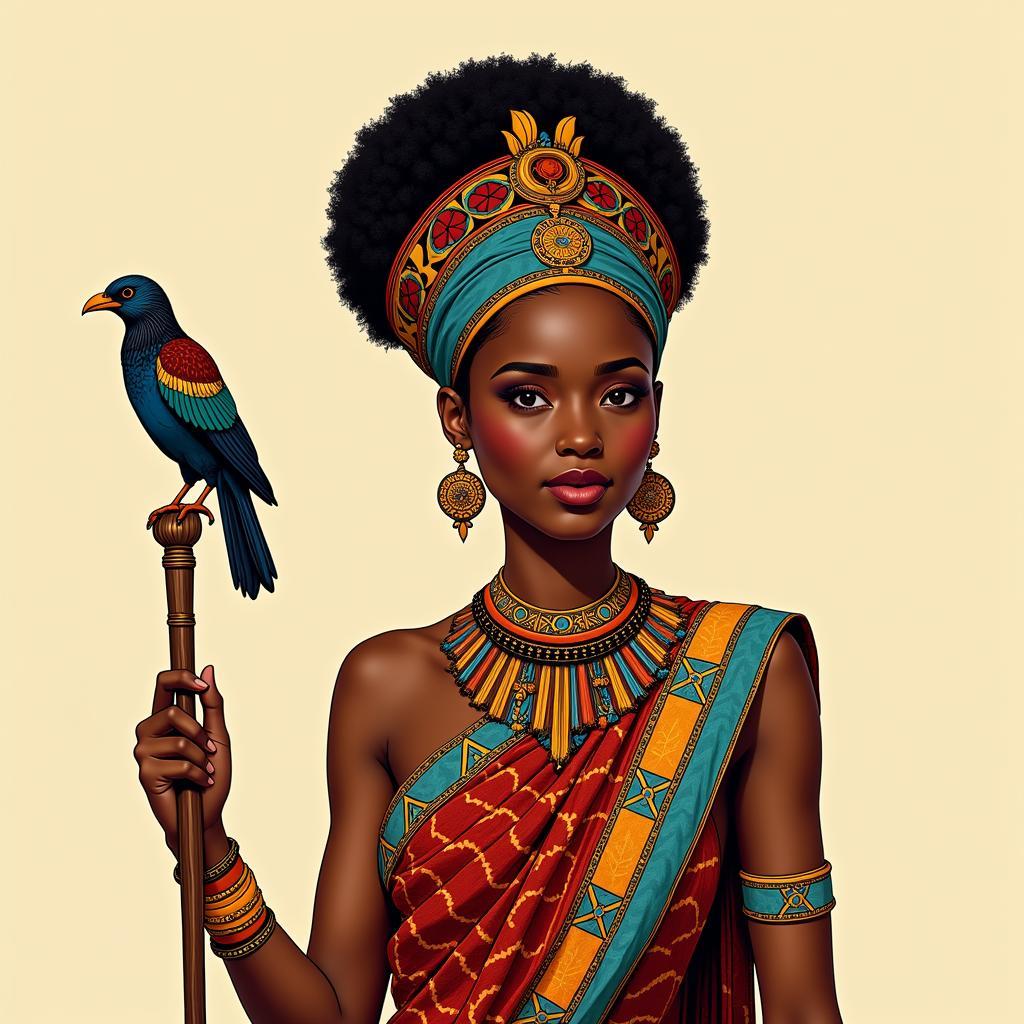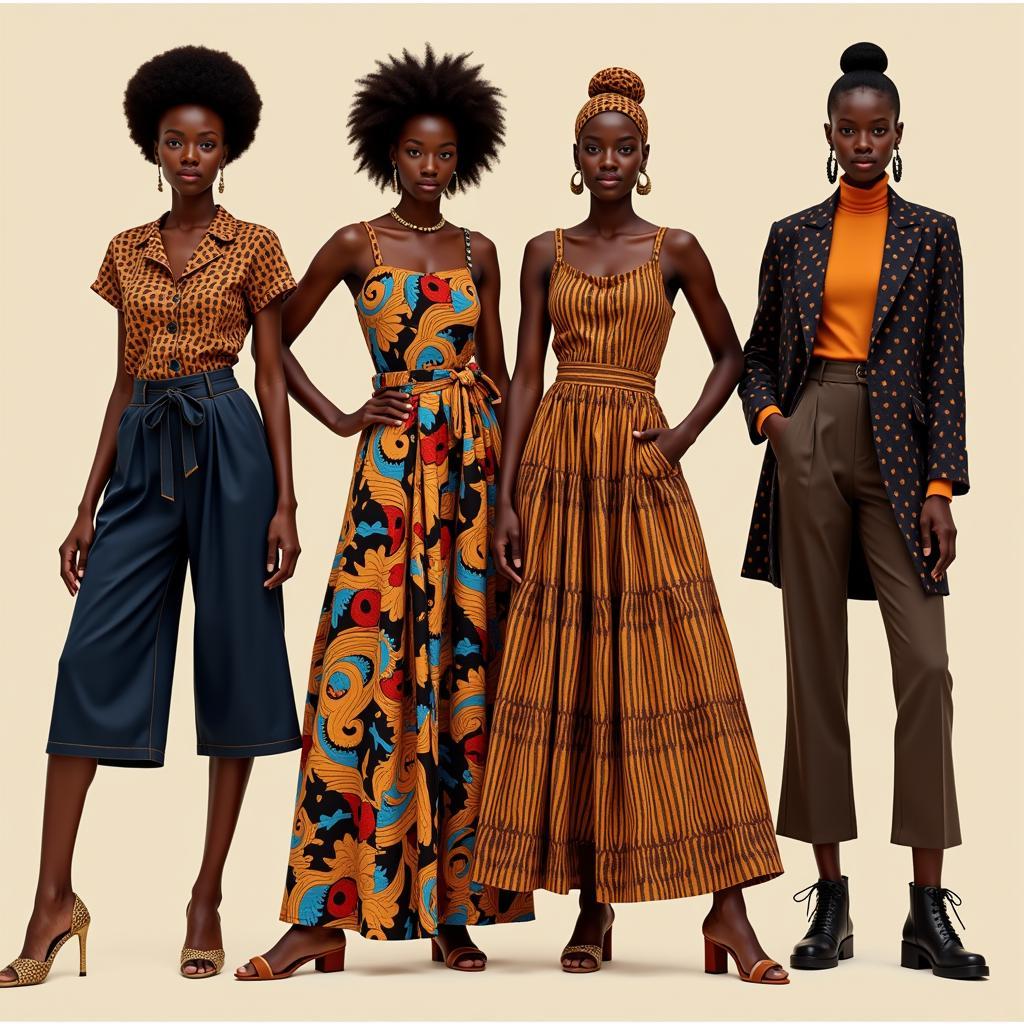African Drawings and Paintings: A Vibrant Tapestry of Artistic Heritage
African Drawings And Paintings are not merely visual representations but rather windows into the soul of the continent, reflecting its rich history, diverse cultures, and profound spiritual beliefs. From the ancient rock art of the Sahara to the contemporary masterpieces gracing global galleries, African art transcends time and space, captivating audiences with its vibrant colors, intricate patterns, and powerful symbolism.
Unveiling the Diversity of African Art
The vast continent of Africa is home to a myriad of ethnic groups, each with its unique artistic traditions and styles. This incredible diversity is reflected in the wide array of drawings and paintings that have emerged from different regions.
North Africa: Echoes of Ancient Civilizations
North African art is deeply influenced by the region’s ancient civilizations, such as the Egyptians, Berbers, and Moors. Intricate geometric patterns, vibrant colors, and stylized human figures are characteristic features of this style. Islamic art, with its emphasis on calligraphy and abstract designs, also plays a significant role in North African aesthetics.
West Africa: A Celebration of Ritual and Tradition
West Africa is renowned for its vibrant textiles, intricate masks, and elaborate sculptures. Drawings and paintings from this region often depict scenes from daily life, mythology, and spiritual beliefs. Bold colors, stylized figures, and a strong sense of rhythm are hallmarks of West African art.
East Africa: A Fusion of Influences
East African art reflects the region’s diverse cultural influences, blending indigenous traditions with elements from the Middle East and Asia. Intricate beadwork, vibrant textiles, and figurative sculptures are prominent in this region. Drawings and paintings often depict scenes from nature, wildlife, and traditional ceremonies.
Southern Africa: A Tapestry of Ancient and Modern
Southern African art is characterized by its diversity, encompassing ancient rock art, traditional beadwork, and contemporary paintings. The region is known for its powerful use of symbolism and storytelling. Drawings and paintings often explore themes of identity, social issues, and the natural world.
The Significance of African Drawings and Paintings
Beyond their aesthetic appeal, African drawings and paintings serve a multitude of purposes. They are used in:
- Rituals and ceremonies: Many African cultures use art in their spiritual practices. Masks, sculptures, and paintings are believed to hold spiritual power and are used in ceremonies to invoke deities, ward off evil spirits, and celebrate important events.
- Storytelling and history preservation: Drawings and paintings have long been used as a means of recording history and transmitting cultural knowledge from one generation to the next.
- Social commentary and political expression: Contemporary African artists often use their work to address social issues, political events, and the challenges facing their communities.
African Art in the Global Context
African drawings and paintings have had a profound impact on the development of modern art. Artists such as Pablo Picasso, Henri Matisse, and Amedeo Modigliani were inspired by the bold colors, simplified forms, and expressive power of African art, incorporating these elements into their own work.
Today, African art is recognized as a major force in the global art scene. Museums and galleries around the world are showcasing the work of contemporary African artists, and collectors are increasingly seeking out African drawings and paintings for their unique beauty and cultural significance.
What Makes African Drawings and Paintings Unique?
African drawings and paintings possess a distinct character that sets them apart from other art forms. Some key characteristics include:
- Emphasis on symbolism and storytelling: African art is often imbued with deep symbolic meaning, reflecting the beliefs and values of the cultures that produced it.
- Use of natural materials: Many African artists use natural materials found in their environment, such as wood, clay, pigments from plants and minerals, and animal hides.
- Bold colors and patterns: African art is renowned for its vibrant colors and intricate patterns, which often hold symbolic significance.
- Stylized figures and forms: African art often depicts figures and forms in a stylized manner, emphasizing certain features and simplifying others.
Conclusion
African drawings and paintings are a testament to the continent’s rich cultural heritage and artistic creativity. From the ancient rock art of the Sahara to the contemporary masterpieces gracing global galleries, African art continues to captivate and inspire audiences worldwide. By exploring the diverse styles, techniques, and symbolism of African drawings and paintings, we can gain a deeper appreciation for the beauty and complexity of African culture.
FAQs about African Drawings and Paintings
What are the most common themes in African drawings and paintings?
Common themes include: daily life, rituals and ceremonies, mythology, ancestors, nature, animals, and social commentary.
What materials are used in African drawings and paintings?
Materials vary widely, including natural pigments from plants and minerals, charcoal, wood, clay, animal hides, and more recently, acrylics and oils.
Where can I see examples of African drawings and paintings?
Museums specializing in African art, such as the British Museum in London and the Metropolitan Museum of Art in New York, have extensive collections. Galleries dedicated to African art can be found in major cities worldwide.
How can I tell if an African drawing or painting is authentic?
It is best to purchase African art from reputable dealers and galleries who can provide provenance and authentication.
What is the significance of masks in African art?
Masks often represent spirits, ancestors, or deities and are used in rituals and ceremonies.
Need More Information?
Explore these related articles on our website:
For assistance with African art inquiries, contact us:
Phone: +255768904061
Email: kaka.mag@gmail.com
Address: Mbarali DC Mawindi, Kangaga, Tanzania
Our customer care team is available 24/7 to assist you.

